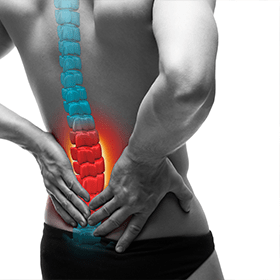By Ben Fletcher
4 Exercises for Healthier Hamstrings
The hamstring muscles, positioned in the back of the thigh, are responsible for extending the hip and flexing the knee. Healthy hamstrings are important, and the key to strong, healthy hamstrings is to find exercises that load both the hamstring muscles and tendons. You should then look to perform these exercises regularly.
Those of you who have suffered from a previous hamstring injury know the frustration they can cause. A hamstring injury, usually a strain, is when excessive stretching or tearing of the muscle fibres occurs. These injuries are often seen in activities that involve running at high speeds which is why they are common in team sports this means hamstring strengthening is a must if you participate in sports that require sprinting.
Following initial treatment of the injury you should look to start performing exercises that target your hamstrings and strengthen the muscles and tendons. This will help to reduce the risk of picking up an injury.
The hamstring bridge is a great exercise to include in your strength workouts, and these four progressions you can look to work through:
Long Bridge Isometric Hold
The first progression is an isometric contraction with your feet on the floor, pushing out away from your glutes. An isometric contraction is when the muscle stays the same length while contracting. It is a great exercise to start building strength in the muscles and connective tissue without placing too much stress on them too quickly.
- Make sure you keep your core engaged so your ribs don't flare, and keep your hips through at the top.
Hamstring Bridge
- Now raise your feet onto a bench or something similar to perform a dynamic hamstring bridge.
- Start with your hips and knees set at 90 degrees, with your core engaged so your back is flat on the floor.
- Think about driving hard through your heels to raise your hips off the floor until you have formed a straight line from your knee to your shoulders.
- Avoid arching your back at the top too, as this will add stress to your lower back.
2 Up, 1 Down Hamstring Bridge
To progress from the hamstring bridge, you are now going to challenge the eccentric, or lowering part of the exercise by performing it on one leg.
- Drive hard through both heels to lift your hips up.
- At the top, bend one leg with your hip and knee at 90 degrees, then lower yourself down slowly.
- It is important that you keep your hips square and don't let them drop on one side.
Barbell Hamstring Bridge
Once you have worked though the above progressions, you are now at a point where you can start to add resistance to your hamstring bridge. There are many ways in which you can add resistance such as bands, dumbbells, kettlebells and power bags. In the video above I've used a barbell, but any of the other options are just as effective.
- Drive hard through your heels to raise your hips off the floor.
- Avoid arching your lower back at the top of the lift and control the downward phase.
Important to note
The above information is not intended to be medical advice tailored specifically for you. The first steps towards dealing with a hamstring injury should be to consult with a medical professional and have your hamstring assessed so you have a proper diagnosis. The professional in question can then help you with the rehabilitation of your hamstring by creating a personalised rehabilitation programme.

